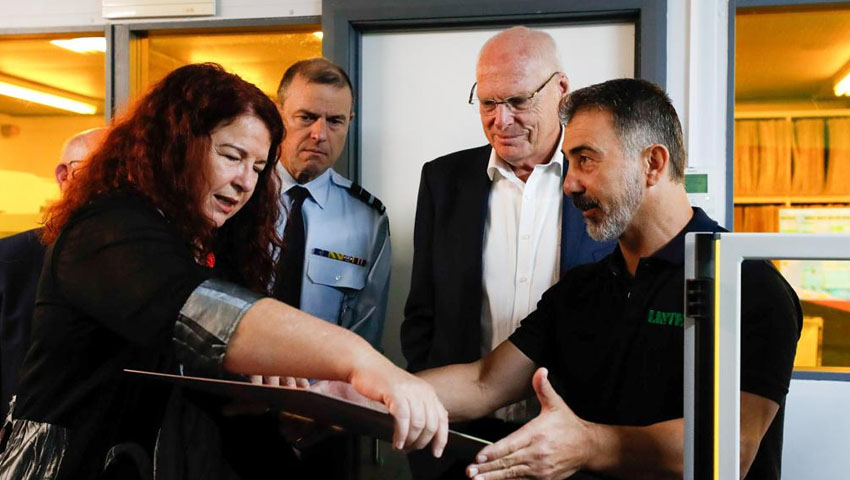Defence Industry Minister Melissa Price has announced the latest round of Defence Innovation Hub contracts worth more than $21 million to boost Australia’s defence industry, helping businesses create new jobs and develop their pioneering ideas.
This latest round of contracts worth more than $21 million is part of the Commonwealth government's flagship $640 million defence innovation program, first announced in 2016 as part of the Defence Industry Policy Statement.
Minister Price explained, "This latest funding boost will see the development of cutting-edge space, cyber and maritime technologies. The contracts were awarded to small businesses from across Australia, and two contracts with leading Australian universities."
The successful programs and projects announced as part of the latest round of funding include:
| Organisation | State | Contract value (GST incl.) | Description of innovation |
| University of Sydney | NSW | $6.5 million | To continue the development of a new imaging system that uses light technology to enhance real time situational awareness. If successful, this technology could improve the quality of the data and information to enhance decision making. |
| Solar Sailor Engineering (Trading as Ocius) | NSW | $5.5 million | To continue the development of Bluebottle, an innovative unmanned surface vessel. If successful, this technology could provide the Royal Australian Navy with a unique capability to help protect Australian maritime borders. |
| Penten | ACT | $5.4 million | To continue the development of data protection products. If successful, this technology could provide protection of information that is processed, stored and transmitted from portable electronic devices. |
| UAV Vision (trading as AVT Australia) | VIC | $1.9 million | To develop a compact lightweight, high-definition video system that can be fitted to unmanned aerial vehicles. If successful, this technology could enhance reconnaissance and surveillance capabilities. |
| Quintessence Labs | ACT | $1.7 million | To develop a system that can rationalise multiple IT systems into one online environment. If successful, this technology could be used when both physical space and power options are limited. |
| High Earth Orbit Robotics | NSW | $270,000 | To conduct research into de-centralised network technology that can be used to improve Defence’s situational awareness of the space domain. |
| RUAG Australia VIC | $270,000 | Together with RMIT and Monash University, RUAG is seeking to develop a new technique for repairing hulls, armour and mechanical systems. If successful, this technology could offer significant sustainment benefits to the ADF by reducing costs and improving operational agility. | |
| Deakin University | VIC | $260,000 | To research the development of an Australian-based pilot training system for the Royal Australian Air Force. This would be Australia’s first high G-force training simulator offering the Air Force access to world-class training locally. |
The Commonwealth government has supported more than $200 million worth of innovative projects through the Defence Innovation Hub – and more than 80 per cent of this investment has been with micro, small and medium-sized enterprises.
The University of Sydney has been awarded a $6.5 million contract to develop a new electronic receiver system.
Minister Price added, "University of Sydney researchers will continue the development of a new imaging system that uses light manipulation technology to enhance real-time situational awareness for military operations.
"If successful, this technology could help to make decisions that will keep Australian troops safer in the battle space."
The 2016 Defence Industry Policy Statement outlined a new approach to Defence innovation. Defence has transformed the way it approaches innovation, streamlining its engagement with industry and academia, simplifying access to Defence research funding, and creating a seamless link between capability needs, smart ideas and innovation in Australian industry.
"Importantly, these investments have created hundreds of new Australian jobs, so we know we’re investing in the growth and capability of our defence industry," Minister Price explained.
Defence now has a single innovation development pipeline, with two-signature innovation programs: the Next Generation Technologies Fund and the Defence Innovation Hub.
The Next Generation Technologies Fund is managed by Defence Science and Technology Group.
With an investment of $730 million over the decade to 2025-26, the Next Generation Technologies Fund is a forward-looking program focusing on research in emerging and future technologies for the "future Defence Force after next".
Innovative technologies and concepts researched under the Next Generation Technologies Fund could be further developed and realised into capability through the Defence Innovation Hub.
Funded at around $640 million over the decade to 2025-26, the Defence Innovation Hub accepts proposals that are ready to enter the engineering and development stages of the innovation process from concept exploration and technology demonstration, through to prototyping and integrated capability demonstration and evaluation.








